Calendula flowers, also known as marigolds, are a versatile and vibrant addition to gardens worldwide. With their sunny hues and medicinal benefits, these blooms have captured the hearts of gardeners and herbalists alike. Here, we explore 28 types of calendula flowers, showcasing their unique features, names, and uses.
Popular Calendula Flower Species
Calendula stellata
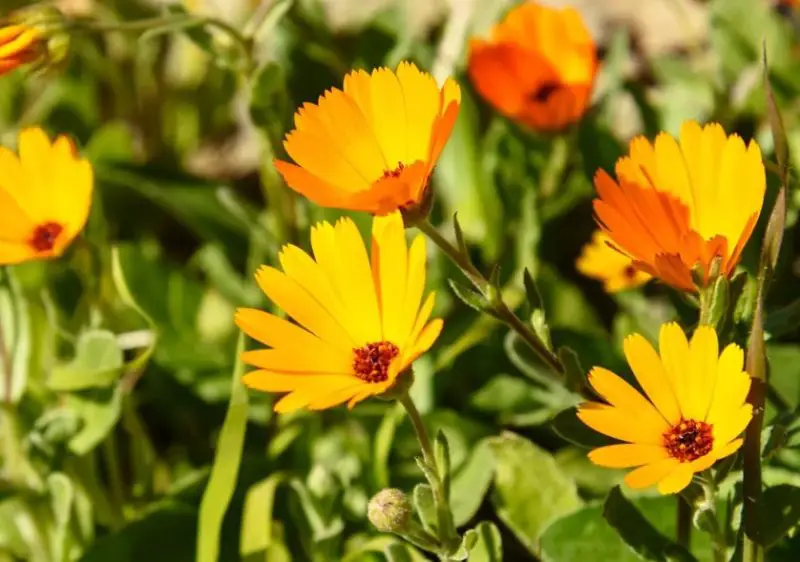
Calendula stellata is named for its star-shaped flowers, which give it a distinctive appearance compared to other calendula species. This lesser-known type is not commonly found in cultivation but is appreciated for its ornamental value and intriguing flower structure. Its unique star-like blooms make it an excellent choice for those interested in unusual or rare garden plants. While it is not widely used medicinally, its striking form adds visual interest to botanical collections or experimental gardens.
Calendula alata
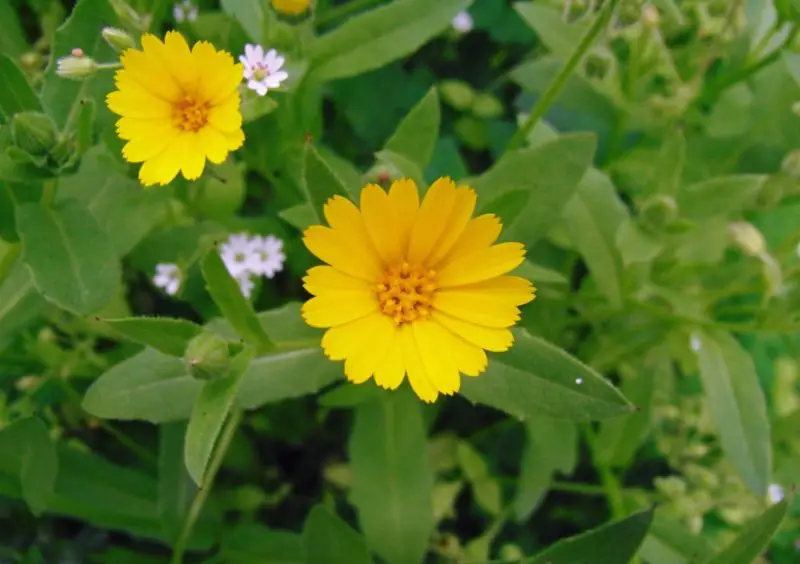
Calendula alata is recognized for its winged stems, a unique feature that sets it apart from other species in the genus. Though not commonly cultivated in gardens, it is occasionally included in botanical collections due to its distinctive morphology. The plant produces small yellow flowers and is more likely to be found in natural or experimental settings. Its unusual structure appeals to those interested in plant diversity and taxonomy.
Calendula maderensis
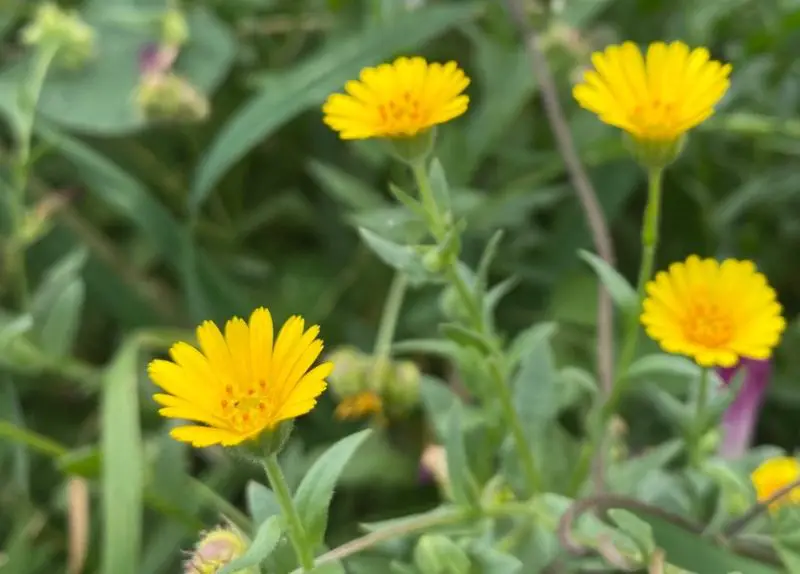
Native to the Madeira Islands, Calendula maderensis is a robust species adapted to rocky and arid conditions. It features large, often solitary flowers in bright shades of yellow or orange. This plant is particularly suited to challenging environments, showcasing its hardiness and resilience. Its striking blooms and adaptability make it a rare but valuable addition to xeriscape gardens or collections focused on island flora.
Calendula fulgida
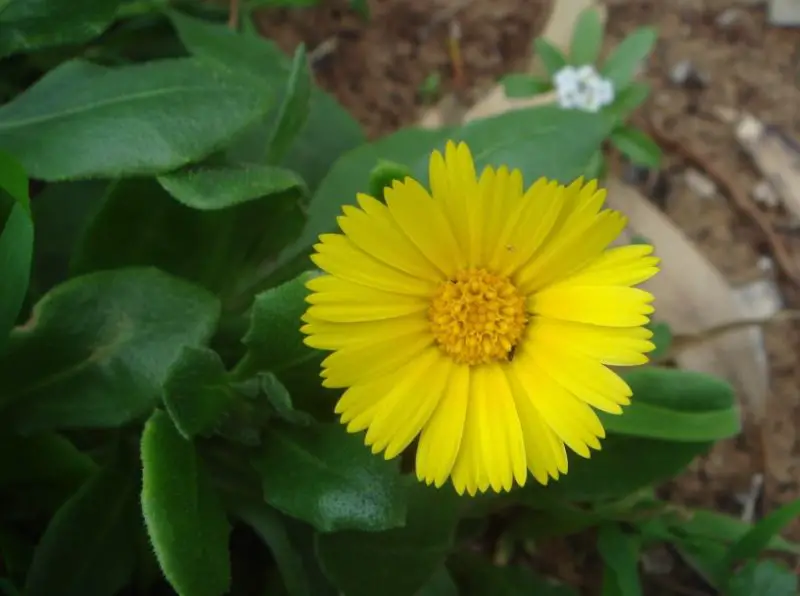
Calendula fulgida lives up to its name, producing bright, shining yellow-orange flowers that are larger and more solitary than those of many other calendula species. The plant’s radiant blooms are highly ornamental and attract pollinators, making it a favorite for garden enthusiasts seeking vivid, sun-loving plants. Though not as commonly utilized for medicinal purposes, its striking beauty makes it a standout in decorative settings.
Calendula denticulata
Calendula denticulata is noted for its finely toothed leaves, which give it a distinctive appearance compared to other species in the genus. While it is not widely grown or used medicinally, its ornamental value makes it a charming addition to flower gardens. The plant produces small yellow or orange blooms and thrives in sunny, dry conditions, appealing to gardeners seeking a unique, drought-tolerant species.
Calendula eckerleinii
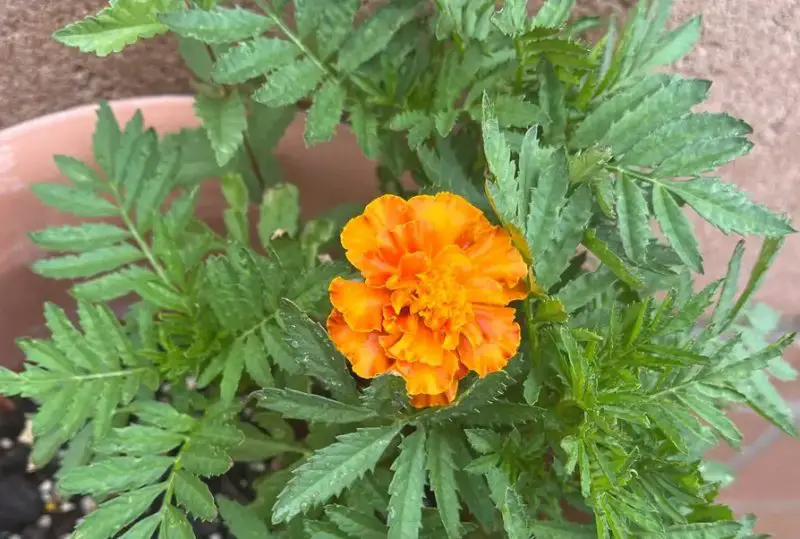
Calendula eckerleinii is a rare species named after Austrian botanist Eckerlein. Native to the Balkan Peninsula, this plant is not widely cultivated but is valued for its unique characteristics in specialized botanical collections. Its flowers and growth habit reflect its adaptation to specific regional conditions, making it an intriguing subject for those interested in rare and region-specific flora.
Calendula tripterocarpa

Calendula tripterocarpa is characterized by its distinctive three-winged fruits, which give the plant its name. This species is less common in gardens but holds interest for botanical studies and naturalists. Its flowers are typically small and yellow, and it thrives in dry, sunny conditions. The plant’s unusual seed structure makes it a fascinating example of biodiversity within the calendula genus.
Calendula pachysperma

Calendula pachysperma, known for its thick-seeded fruits, is adapted to harsh environments, often found in the eastern Mediterranean. The plant produces small, vibrant flowers and exhibits remarkable resilience to arid conditions. Its ability to thrive in challenging habitats makes it an excellent choice for xeriscaping or conservation-focused gardens. This species highlights the diversity and adaptability of the calendula genus.
Calendula officinalis
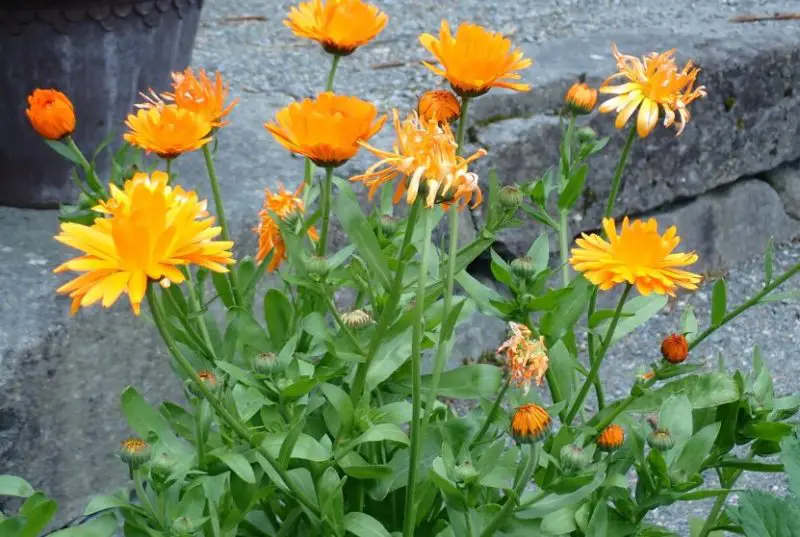
Calendula officinalis, often called pot marigold, is the most widely known type of calendula. It is cherished for its vibrant orange or yellow flowers and its extensive medicinal uses. Known for its anti-inflammatory, antimicrobial, and healing properties, this plant is commonly used in skincare products and herbal remedies. Its flowers are edible, adding both flavor and color to dishes like salads. The plant is easy to cultivate, thriving in sunny locations with well-drained soil, and often grows as an annual in gardens. Its cheerful blooms make it a favorite for ornamental purposes as well as natural health solutions.
Calendula arvensis
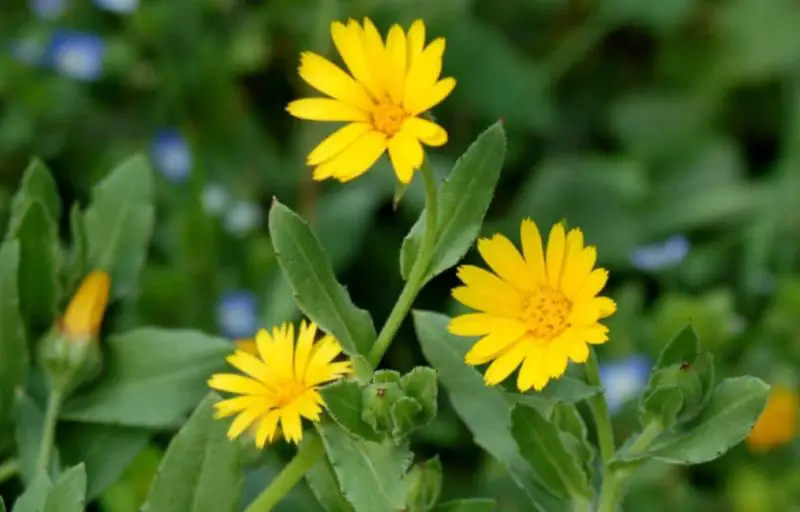
Calendula arvensis, commonly referred to as field marigold, is a smaller and less showy relative of Calendula officinalis. It is native to the Mediterranean region and often found in wilder or more uncultivated areas. The plant produces petite yellow or orange flowers and thrives in dry, sunny habitats. Unlike its more famous cousin, C. arvensis is not as widely used medicinally, but it still holds minor therapeutic value. Its simplicity and ability to adapt to various conditions make it an interesting subject for those who study natural flora or enjoy rustic garden aesthetics.
Calendula arvensis var. arvensis
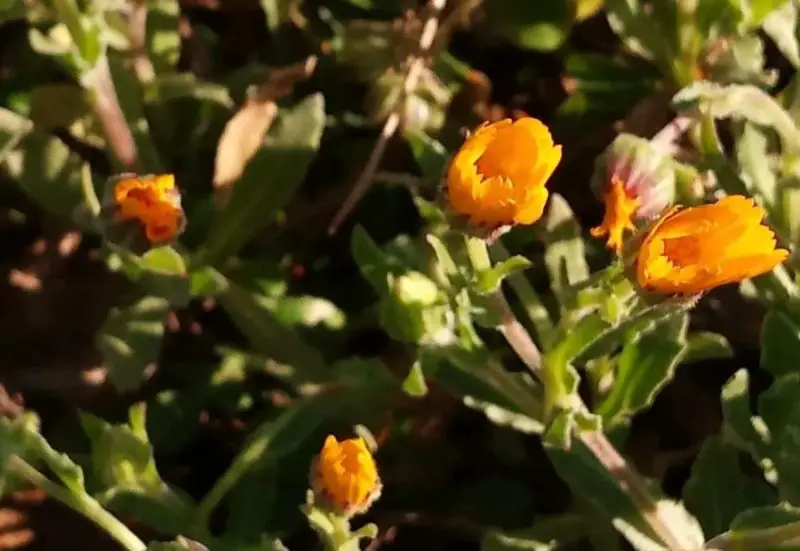
This variety of Calendula arvensis is a subtle variation often distinguished by differences in leaf shape or flower size. It is typically found in specific geographic areas, where local environmental conditions have influenced its characteristics. While it shares the same small flowers and adaptability as its parent species, this variety is less prominent in cultivation. It appeals to botanists and naturalists interested in regional biodiversity and subtle plant adaptations.
Calendula suffruticosa
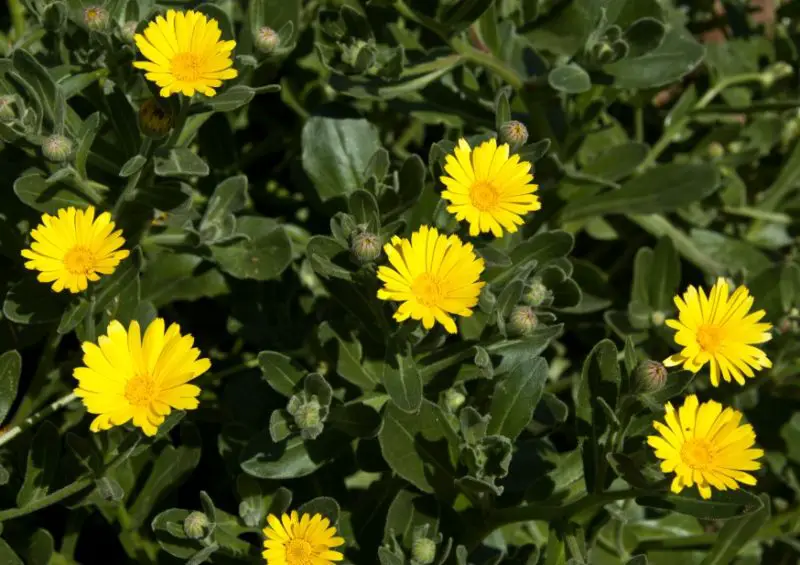
Calendula suffruticosa, or Sicilian marigold, is a perennial species native to the Mediterranean region. Unlike the more common annual varieties, this plant features woody stems that give it a shrub-like appearance and can grow up to 50 cm tall. Its flowers are typically less double and more sparse compared to Calendula officinalis, making it less flashy but equally charming. This species thrives in rocky or coastal environments, showcasing its resilience and suitability for xeriscaping. Its unique growth habit makes it a standout among calendulas for gardeners who prefer perennial plants.
Calendula incana
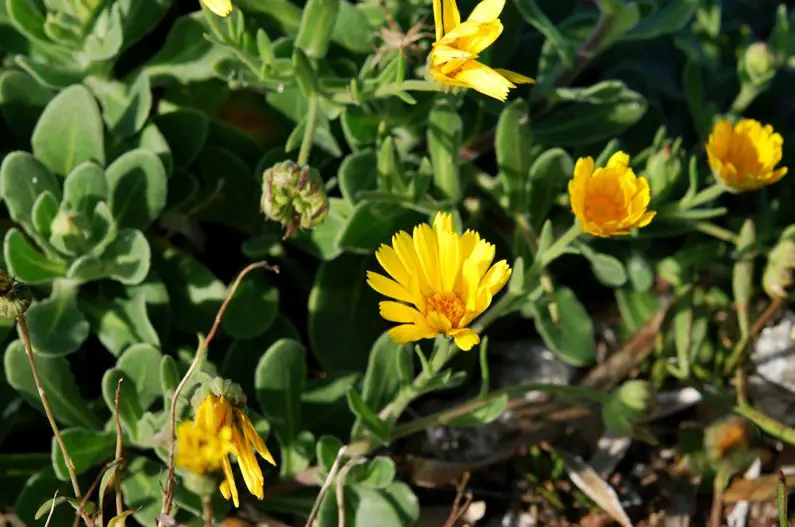
Calendula incana is distinguished by its woolly or hairy leaves, adding a unique texture to gardens. Its small yellow-orange flowers complement the soft, fuzzy foliage, creating an appealing contrast. While it is not widely used for medicinal purposes, it serves as an ornamental addition, especially in rock gardens or areas emphasizing drought-tolerant plants. This species thrives in sunny, dry conditions, making it a good choice for xeriscaping. Its understated beauty and tactile leaves appeal to gardeners seeking something different from the usual calendulas.
Calendula maroccana
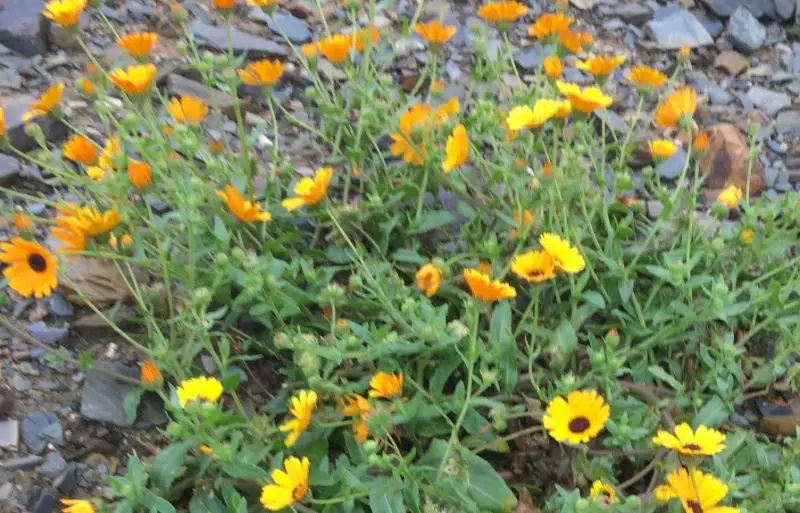
Native to Morocco, Calendula maroccana is prized for its vibrant, larger flowers, which have been selectively bred for ornamental purposes. Its blossoms typically come in shades of orange, yellow, or even bi-color variations, adding a splash of warmth to any garden. This species thrives in well-drained soil under full sunlight and is highly adaptable to arid climates. Its robust nature and showy flowers make it a favorite for gardeners looking to incorporate bold color and resilience into their landscapes.
Calendula palaestina
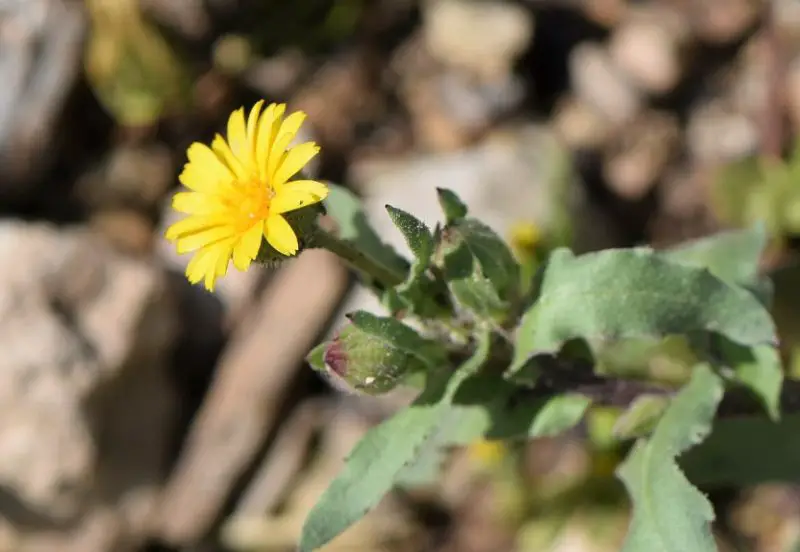
Calendula palaestina is native to the region of Palestine and is adapted to its local climate and soil conditions. This species has smaller, daisy-like yellow flowers and thrives in arid or semi-arid habitats. It is less common in cultivation but is valuable for those studying regional biodiversity or looking to recreate Middle Eastern native gardens. Its resilience and ability to grow in challenging environments make it a unique and ecologically important plant.
Calendula persica
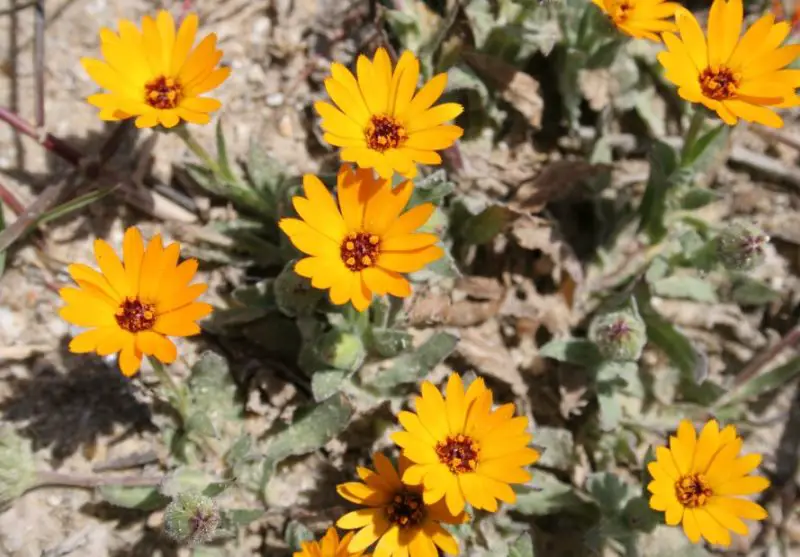
Native to Iran, Calendula persica features a sprawling growth habit, with delicate yellow or orange blooms that contrast with its trailing stems. While not widely recognized outside botanical circles, it is appreciated for its adaptability to arid regions and low-maintenance nature. Its informal growth style makes it suitable for naturalized gardens or areas emphasizing wildflower aesthetics. This calendula species reflects the diversity of its genus and the adaptability of plants to specific regional conditions.
Calendula suffruticosa var. lusitanica

A variant of the Sicilian marigold, Calendula suffruticosa var. lusitanica hails from Portugal and exhibits subtle regional adaptations. Its growth habit and flower size are similar to the parent species, but it may display slight differences in foliage or bloom form, reflecting the influence of local climates. This variety thrives in rocky or coastal areas, making it ideal for Mediterranean-style gardens.
Calendula stellata var. integrifolia
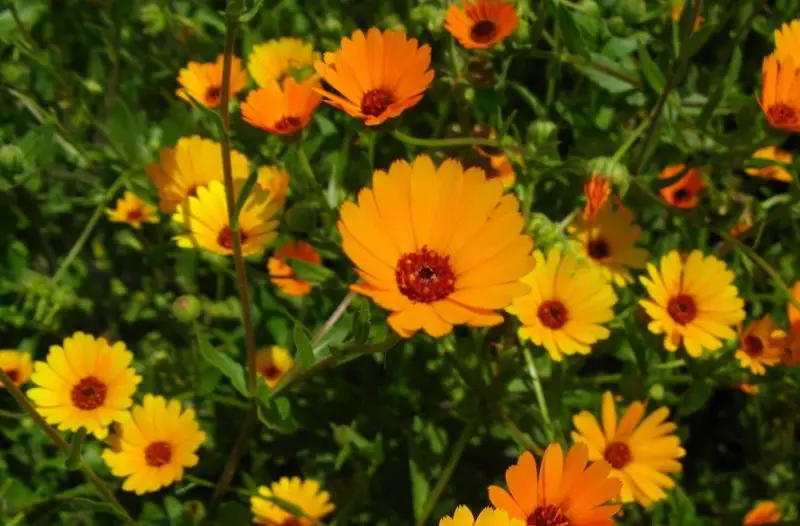
This variety of Calendula stellata is distinguished by its entire, smooth-edged leaves, unlike the toothed foliage of its parent species. It features the same star-shaped yellow flowers but may prefer slightly different ecological conditions. This variation adds interest to botanical collections, appealing to those who study plant adaptations and diversity.
Calendula bicolor
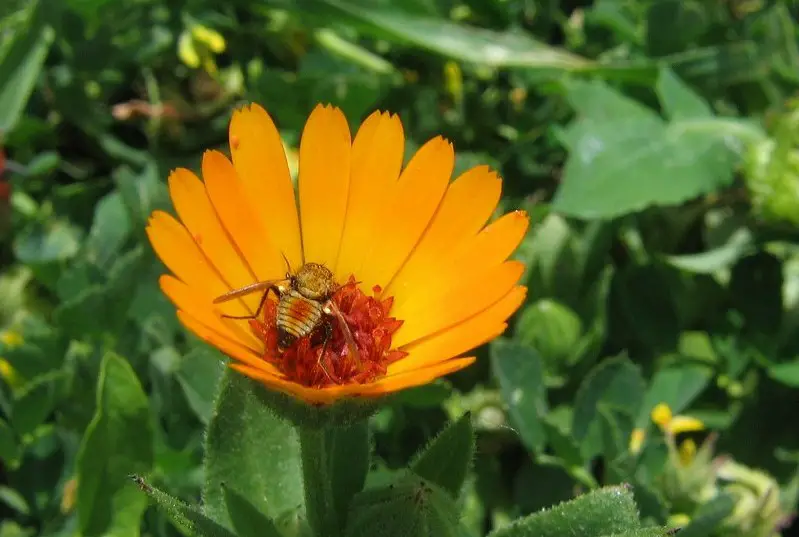
Calendula bicolor refers to varieties or cultivars featuring two-toned flowers, typically achieved through selective breeding. The petals often display contrasting shades of yellow, orange, or cream, adding depth and vibrancy to gardens. While not officially recognized as a species, it represents the potential for ornamental development within the calendula genus, making it popular among gardeners seeking colorful, eye-catching plants.
Calendula officinalis ‘Lemon Cream’

This cultivar of Calendula officinalis is celebrated for its soft, lemon-yellow flowers, offering a subtle yet distinct variation on the common pot marigold. Its pale blooms provide a gentle contrast to the bold oranges and yellows typically associated with calendulas. This variety is often used for ornamental purposes in cottage gardens or mixed borders, showcasing the results of selective breeding for unique coloration.
Calendula suffruticosa var. aurantiaca
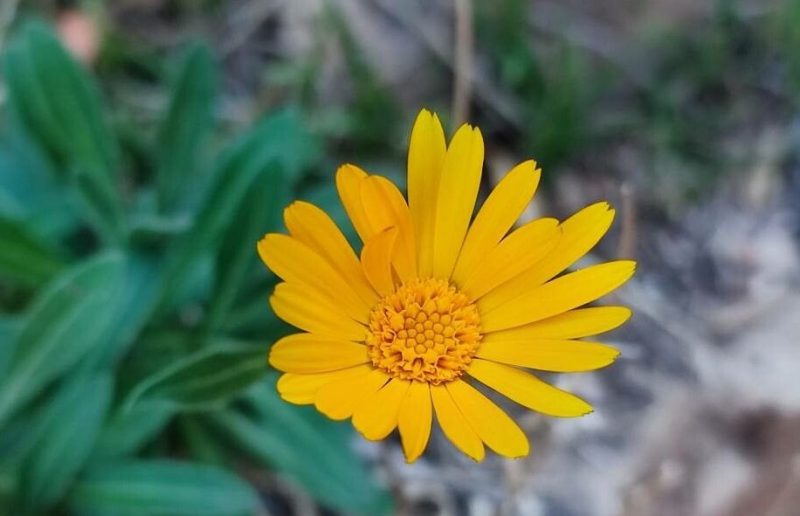
A variant of the Sicilian marigold, Calendula suffruticosa var. aurantiaca is notable for its vibrant orange flowers. This slight color variation sets it apart from the typical yellow-orange blooms of the species. It thrives in rocky, Mediterranean-like environments and is a valuable addition to gardens emphasizing resilience and regional plantings.
Calendula suffruticosa var. tomentosa

Calendula suffruticosa var. tomentosa is characterized by its densely hairy, tomentose leaves, which give it a velvety texture. This variant of the Sicilian marigold is well-suited to dry, sunny locations and rocky landscapes. Its unique foliage adds visual and tactile interest to gardens, appealing to those who appreciate textural diversity in plants.
Calendula incana var. microcephala
A variation of the woolly calendula, Calendula incana var. microcephala is distinguished by its smaller flower heads. This adaptation may reflect its evolution in specific microclimates or ecological niches. Its compact blooms and soft, hairy leaves make it an interesting addition to collections focused on rare or regionally adapted plants.
Calendula officinalis ‘Kablouna’
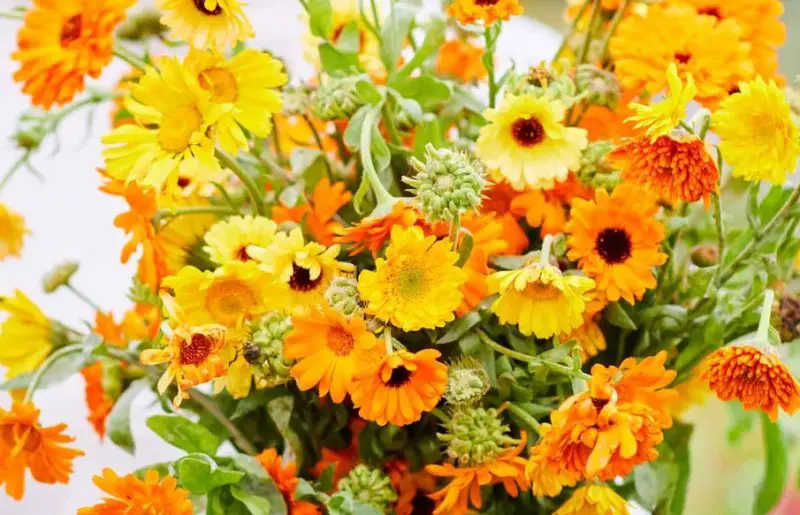
Calendula officinalis ‘Kablouna’ is a striking cultivar known for its large, fully double flowers. These blooms, often in vibrant shades of orange or yellow, create a dramatic visual impact in ornamental gardens. Bred for aesthetic appeal, this cultivar highlights the diversity achievable within the species, making it a favorite for gardeners who prioritize showy, bold plants.






